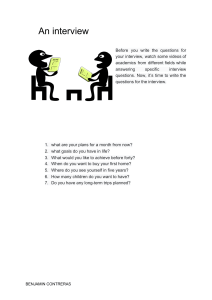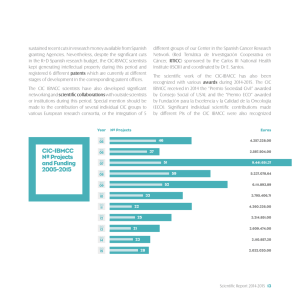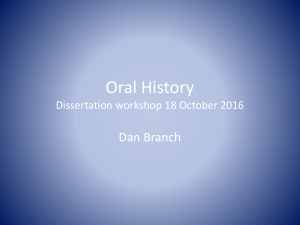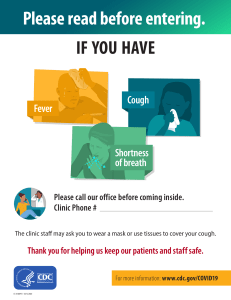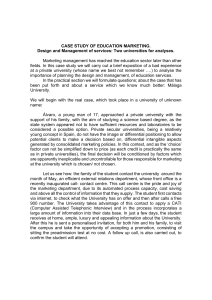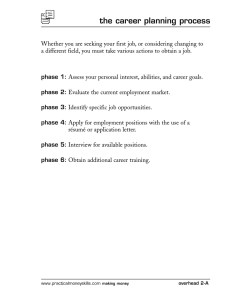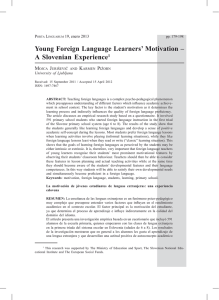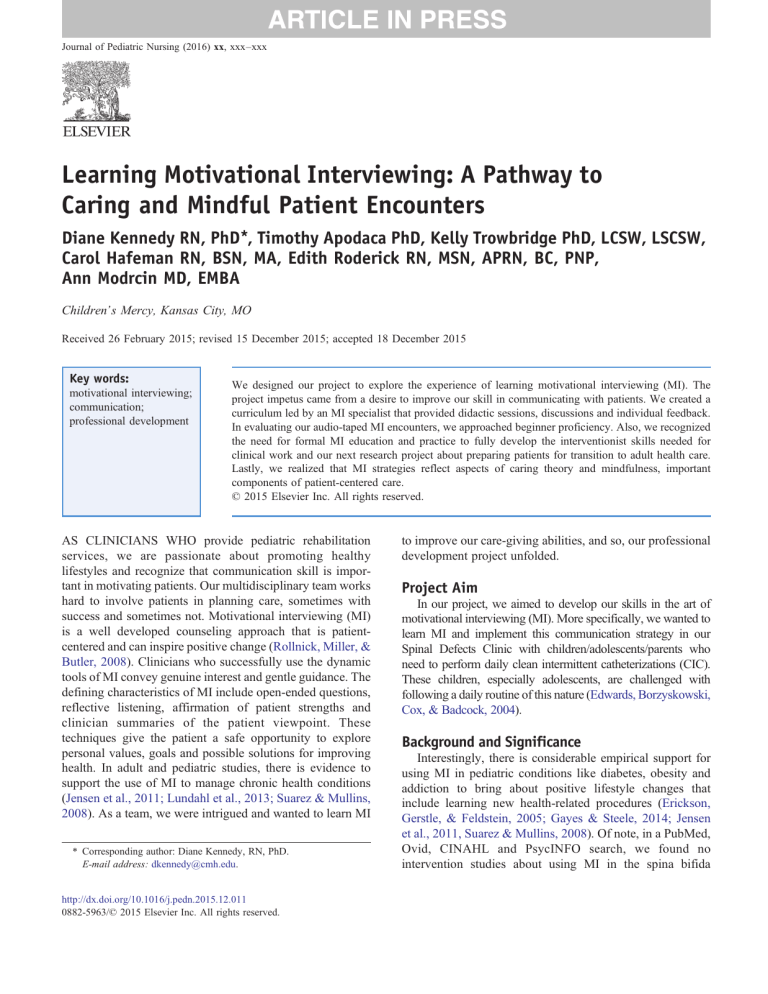
Journal of Pediatric Nursing (2016) xx, xxx–xxx Learning Motivational Interviewing: A Pathway to Caring and Mindful Patient Encounters Diane Kennedy RN, PhD ⁎, Timothy Apodaca PhD, Kelly Trowbridge PhD, LCSW, LSCSW, Carol Hafeman RN, BSN, MA, Edith Roderick RN, MSN, APRN, BC, PNP, Ann Modrcin MD, EMBA Children’s Mercy, Kansas City, MO Received 26 February 2015; revised 15 December 2015; accepted 18 December 2015 Key words: motivational interviewing; communication; professional development We designed our project to explore the experience of learning motivational interviewing (MI). The project impetus came from a desire to improve our skill in communicating with patients. We created a curriculum led by an MI specialist that provided didactic sessions, discussions and individual feedback. In evaluating our audio-taped MI encounters, we approached beginner proficiency. Also, we recognized the need for formal MI education and practice to fully develop the interventionist skills needed for clinical work and our next research project about preparing patients for transition to adult health care. Lastly, we realized that MI strategies reflect aspects of caring theory and mindfulness, important components of patient-centered care. © 2015 Elsevier Inc. All rights reserved. AS CLINICIANS WHO provide pediatric rehabilitation services, we are passionate about promoting healthy lifestyles and recognize that communication skill is important in motivating patients. Our multidisciplinary team works hard to involve patients in planning care, sometimes with success and sometimes not. Motivational interviewing (MI) is a well developed counseling approach that is patientcentered and can inspire positive change (Rollnick, Miller, & Butler, 2008). Clinicians who successfully use the dynamic tools of MI convey genuine interest and gentle guidance. The defining characteristics of MI include open-ended questions, reflective listening, affirmation of patient strengths and clinician summaries of the patient viewpoint. These techniques give the patient a safe opportunity to explore personal values, goals and possible solutions for improving health. In adult and pediatric studies, there is evidence to support the use of MI to manage chronic health conditions (Jensen et al., 2011; Lundahl et al., 2013; Suarez & Mullins, 2008). As a team, we were intrigued and wanted to learn MI ⁎ Corresponding author: Diane Kennedy, RN, PhD. E-mail address: [email protected]. http://dx.doi.org/10.1016/j.pedn.2015.12.011 0882-5963/© 2015 Elsevier Inc. All rights reserved. to improve our care-giving abilities, and so, our professional development project unfolded. Project Aim In our project, we aimed to develop our skills in the art of motivational interviewing (MI). More specifically, we wanted to learn MI and implement this communication strategy in our Spinal Defects Clinic with children/adolescents/parents who need to perform daily clean intermittent catheterizations (CIC). These children, especially adolescents, are challenged with following a daily routine of this nature (Edwards, Borzyskowski, Cox, & Badcock, 2004). Background and Significance Interestingly, there is considerable empirical support for using MI in pediatric conditions like diabetes, obesity and addiction to bring about positive lifestyle changes that include learning new health-related procedures (Erickson, Gerstle, & Feldstein, 2005; Gayes & Steele, 2014; Jensen et al., 2011, Suarez & Mullins, 2008). Of note, in a PubMed, Ovid, CINAHL and PsycINFO search, we found no intervention studies about using MI in the spina bifida 2 population. In another search (PubMed, CINAHL, Ovid) about CIC and spina bifida, we found only descriptive studies that report parental/family stress, individual complexities and patient stigma with managing incontinence (Borzyskowski, Cox, Edwards, & Owen, 2004; Chick, Hunter, & Moore, 2013, Edwards et al., 2004; Fagerskiold & Mattsson, 2010; Fischer, Church, Lyons, & McPherson, 2015; Kanaheswari, Razak, Chandran, & Ong, 2011). We need more studies about empowering patients in doing intermittent catheterizations throughout the day as the procedure is a significant lifestyle change. Clean intermittent catheterization (CIC) should be done every three to four hours, requires good handwashing and clean catheters and involves gently inserting a lubricated catheter into the bladder. When the bladder is emptied, the catheter is removed. We know that when CIC becomes a consistent practice, children with spina bifida can often experience less incontinence, achieve social continence, reduce odor and prevent renal dysfunction (Mourtzinos & Stoffel, 2010). Many of these children reach adulthood and lead fulfilling lives, especially when CIC is part of a daily routine. Those who struggle with this routine are good candidates for motivational interviewing as the conceptual components of MI are concrete, intuitive and easily applied in our conversations with patients about CIC. Examples of MI Strategies Motivational interviewing is a collaborative communication style in which the clinician separates from the traditional authoritarian medical model and attempts to gently elicit insight from the patient (Rollnick et al., 2008). First, one must express empathy by listening reflectively, accepting ambivalence and affirming strengths. The patient is viewed as capable of change despite the expression of reluctance. The clinician develops discrepancy, meaning the patient not the provider presents the arguments for change. One must listen for statements that reflect discrepancy and then encourage the patient to develop a concrete plan. Also, the clinician must roll with resistance and always obtains permission to explore health issues. Patients will appreciate a simple query. Can we talk about some of the pros and cons with doing CIC? At the same time, providers must emphasize the patient’s freedom in choosing. Lecturing does not work with ambivalent patients. A kind, respectful approach in exploring ambivalence can be a powerful trigger for change. If patients have not been successful with CIC, the experience could be reframed as positive. You have experience with CIC so you know what works and doesn’t work for you. Lastly, the clinician must support self-efficacy by encouraging choice and conveying a belief that the patient can change. I sense that you are a very determined person. The following MI strategies with exemplars reflect our project aim. OARS is the acronym for these strategies. Each letter of this acronym is illustrated in the examples that follow. D. Kennedy et al. Open-ended questions: How does cathing fit with your daily routine? Affirmations: I’m very impressed with how well you do the procedure. Reflective listening: It’s embarrassing to leave the classroom to do cathing in the nurse’s office. Summary statements: It’s important for you to be dry and stay healthy. On the other hand, cathing would be a big change in your life and may be hard to accomplish, especially four to five times a day. What else would you add? When clinicians respect patient autonomy, the provider/ patient relationship is a collaborative partnership, not authoritarian and prescriptive. In “doing motivational interviewing”, one develops a therapeutic connection that can be an authentic expression of caring. Project Design and Structure Our project team included two RNs, a nurse practitioner, social worker and physician. All team members were female and mid or late career clinicians who work in a Midwestern children’s hospital in the Rehabilitation Medicine Clinics, which includes the Spinal Defects Clinic. We completed formal MI instruction before inviting participation from ambivalent subjects who were identified during Spinal Defects Clinic by the urologist/APRN as appropriate for CIC. We audio-taped five interviews with subjects from this clinic to critique our MI skill. Our subjects are described in Table 1. Also, we were encouraged by our MI trainer to practice the MI strategies with patients or parents in other settings. As part of the MI learning trajectory, we kept a reflective journal about our MI encounters. The project was an IRB approved plan for professional team development. Our experience with learning MI began with a 4-hour workshop held during our yearly Rehabilitation Medicine Department retreat. One of our in-house child psychologists who is an MI trainer and researcher introduced the MI philosophy and strategies. The seminar content stimulated our interest and soon after we planned more formal training. Subsequently, our MI trainer led three, 3-hour, on-campus sessions over a two month period. The training included didactic instruction, discussion following MI videos, multiple MI practice sessions with each other and discussion of scenarios related to CIC. During the duration of this project, we met weekly over the lunch hour to role-play, discuss readings, view MI videos, set realistic goals for our next meeting and identify interview candidates. Monthly, our MI trainer met with us to review our audiotape-recorded role-play and live interviews. We were able to easily incorporate our meetings and training into our clinical work schedule. Our MI trainer followed the MITI 3.1.1 interview coding scheme developed by Moyers, Martin, Manuel, Miller, and Ernst (2010). These researchers developed an explicit coding methodology for rating clinician interview skill (intervention fidelity): global spirit of MI and MI behavior counts (open-ended questions, reflections, etc.). Overall, we were Learning Motivational Interviewing Table 1 3 Description of the Patient/Parent Participants (Interviewees). Alias name and age when interviewed Who does cathing? Reasons for change Maya, 14 years old, female, ambulatory, desired wearing cloth undergarments, Patient To stay dry… understands risks related to urine stasis, has fear of kidney failure, cathing was a To be healthy… hassle, cathing importance rated 10 but confidence rated 4, eager to develop a change To avoid surgeries… plan. John, 11 years old, male, wheel-chair (w/c) user, very engaging and social, a lady’s Mother, sister, Did not develop a plan man from the womb who has a lot of potential (per mother), described cathing as school personnel, during interview hard. sometimes patient Anna, 15 years old, female, ambulatory, a soft ball pitcher, cathing was weird at first, Patient To not leak and stay dry… desired wearing cloth undergarments, cathing importance rated 6, confidence rated 3 To stay healthy… or 4, it hurts if you don’t do it enough but I don’t really get sick when I cath less. To be in control of me… Mary, (mother), 7 year old daughter, mother wanted to learn but fearful of hurting child Father Needed to share CIC though able to change tracheostomy tube, father is child’s school para and became a responsibility with father nurse after birth of child, cathing described as a lot to do, child is a w/c user. Elsa, 16 years old, female, w/c user, reports of cathing not consistent with Patient Because not cathing uro-dynamics, wanted summer job so needed a routine for work schedule. may hurt my kidneys… To feel better… approaching beginner MI proficiency at project completion. To achieve beginner proficiency as described in Table 2, 50% of questions should be open-ended questions, 40% of reflections should be complex reflections and global empathy should be rated a 5 on a 1–7 scale. Training was an on-going process as we dissected each interview during our monthly meetings with our MI mentor who provided individual, detailed clinician feedback about ways to improve our MI skills. Due to time constraints and limited resources, we were unable to demonstrate coder intra-rater or inter-rater reliability. A one page interview guide served as our “safety net” during interviews (Table 3). The Learning Curve We have discussed our learning curve and insights as well as recommendations for all health care providers who encounter patient ambivalence regarding positive lifestyle changes. To begin, we want to share excerpts from our MI encounters with patients who are described in Table 1. We have summarized a few interesting discussion points from the interviews with John, Anna and Maya. When John was asked what would need to change to start cathing more often, John responded nothing. Open questions of this nature may be too abstract for the more concrete thinkers. More focused questions like who could help you do your own cathing at school may work better. John’s mother recognized his struggle and pointed out that he may not get all the urine out, suggesting her own ambivalence though she wanted him to be independent. The attention span of younger children may be an issue, too. After about 10 minutes of talking about cathing at home and at school, John assertively said I’m good and wanted to end the interview to listen to music on his phone. Though a brief interview, we deemed the encounter a good beginning that provided the opportunity to involve the child. When John made closure, his mother began to express her angst. What if something happens to me and no one knows how to take care of John. I need to make a file with all of his health information……He can learn to take care of himself……I’ve had to fight hard with the school to keep the para who definitely can supervise John when he caths…… How do you find an employer who understands?……I need to organize his supplies at home to make it easier. She took pride in creating step-by-step instructions for cathing for a college course. As we talked, she realized that posting these guidelines in the bathroom at home would be helpful. When given the opportunity to speak freely, John’s mother presented legitimate concerns as well as a few solutions, which is the goal of MI. In the interview with Anna, several times, she communicated openly and honestly. I know I could if I really wanted to but I don’t really want to……… It’s obvious you’re different if you do it at set times. Shades of ambivalence were apparent. Nonetheless, Anna agreed to work on a change plan when given the choice. She wanted to cath more frequently. But, it’ll be hard, but I’ll do it. I’ll try. I want to do it, but it’s really hard sometimes. Interestingly, Anna, who was a new patient to the clinic, recalled that no one has explained why cathing is important and greatly appreciated this information. As we listened to the MI tapes with our coach, we discussed the intervention experience, which was an opportunity to brainstorm. If a patient agrees to work on a change plan, clinicians should offer suggestions with permission, of course. For example, keeping a reminder like a picture of attractive undergarments that is hidden in a notebook has helped some of our patients stay on track. The experiences with Anna as well as Maya suggest that wearing undergarments rather than incontinence briefs on return visits to clinic may be an objective measure of MI success. A 4 D. Kennedy et al. Table 2 Interventionist Scores (Adapted from MITI 3.1.1). MI behaviors Role play scores Patient interview scores Beginner proficiency MI competency Motivational interviewing behavior counts % MI adherent 100 100 % Open questions 39 69 % Complex reflections 24 54 Reflection to question ratio 0.75 1:1 100 35 36 0.55 100 23 22 0.3 100 65 19 0.70 100 50 50 0.25 100 88 0 0.25 100 72 20 0.69 100 83 25 0.75 90% 50% 40% 1:1 100% 70% 50% 2:1 Global spirit of motivational interviewing Global empathy (1–7) 4 6 Global MI spirit (1–7) 4 6 6 5 4 3 6 5 5 4 6 6 5 6 5 5 5 5 6 6 Theresa Moyer, one of the MITI authors, granted permission to use the MITI in this project. cathing diary could be a subject burden as well as a risky assessment of change. The novice MI provider can expect to be nervous about doing a live or practice audio-taped interview, but, we found that with training and role-play practice, the beginner can bring forth an honest dialogue with the patient. Of interest to those who had long term relationships with our patients, the clinician who was unfamiliar to the patient elicited unexpected interest in cathing. A new provider may offer an opportunity for a fresh start. In analyzing our interviews, we recognized the need for more interpretive or complex reflections. When Anna shared her concern about everyone knowing, an interpretive response like I can imagine you have concerns about being different could create meaningful dialogue. Also, listening to tapes gave us awareness of personal verbal “tics”, if you will, phrasing like okay…okay…okay to buy time for collecting thoughts or tell me about (authoritarian) rather than what is it like (MI adherent). Table 3 Before each interview, we recommend taking a few minutes to reflect about MI strategies: give choices, allow time to process thoughts (silently count 1, 2, 3), ask questions that begin with how or what and obtain permission. The provider is the intervention and pre-interview review of MI strategies is helpful. Likewise, when we reflected about our interviews in our weekly meetings, we recognized missed opportunities that could be addressed during the next clinic visit. In our Spinal Defects Clinic, the provider team meets after clinic for planning care. This is an ideal time to discuss and document these details and identify patients who may benefit from MI follow-up. A phone text or email conversation following a clinic visit could give time for the patient to think about possibilities and the provider the opportunity to strategize. Aside from patient scenarios about ambivalence, we realized that the OARS strategies are useful communication tools in other aspects of care. What are your main concerns for this phone visit (triage and history taking)? What have Motivational Interviewing Guide for Use in Clinic. Opening the interview Building rapport Building motivation Exploring pros/cons Looking forward/back Exploring goals/values Providing personalized feedback Assessing motivation Importance and confidence rulers Recapitulation Transitioning if appropriate Key questions Giving advice and information Creating a change plan Eliciting commitment Setting goals Considering change options Arriving at a plan If change plan not appropriate, “plant seeds” for change Ending the session on a good note I appreciate your willingness to talk………… What is a typical day like for you……… What was hard about cathing? What might be good about cathing…? When you think about your health, how have things been going… What things are important to you right now…… You’ve shared a lot about yourself……… All right, what makes importance a 5 rather than a 0… Let me try to summarize and please tell me if I’ve left anything out…… At this point, what might be next for you… Would it be okay to tell you a few things that occur to me…… You’re sure things can’t stay the same. Where do you go from here… What do you think is the first step… What do you think might work best… How might you achieve this goal… You said earlier that you are at a 2 or 3 on the importance scale. What might need to happen to move to an 8 or 9…… I appreciate your honesty…… Thank you for letting me get to know you a bit…… If you like, we can talk more during your next visit…… Learning Motivational Interviewing you been told about your child’s diagnosis (patient education)? How do you feel about what you’ve been told about your child’s condition (palliative care)? I’d like to hear about your decision to have spine surgery; what was that like (qualitative research)? In our clinic, our medical director has championed a process for transitioning our patients to adult health care. When using MI to engage the ambivalent patient about self-care and independence, we create a segue way to this topic. Families often site breakdowns in communication as a major stressor in the health care experience. Last year in our hospital, eighty percent of family contacts with the Patient Advocate Department were about staff communication and attitude (Patient Advocate Department, personal communication, January 9, 2014). In an effort to reduce these stressors, we suggest that educators across health care professions (nursing, medicine, social work, etc.) introduce MI strategies early in training. Students need role-playing opportunities and formal evaluation analogous to checking-off on technical skills like placing a catheter. Data suggest that MI competence cannot be accomplished without practice and feedback though the MI training dose for achieving competency is uncertain (Bohman, Forsberg, Ghaderi, & Rasmussen, 2013; Dunhill, Schmidt, & Klein, 2014). We agree that the benefits of interview coding and listening to our interview tapes were significant. In planning a study to test an intervention package that prepares young adults for transition to adult health care, we want to include the MI intervention and participate as MI interventionists, but, to ensure intervention fidelity, we realize the importance of continued practice and thoughtful self-evaluation. Though a bit unexpectedly, we discovered that MI provides the tools to operationalize theoretical components of caring and mindful practice. The senior leadership from our pediatric hospital has formally adopted a philosophy of care driven by the Quality Caring Theory developed by Duffy (2009), a critical care nurse. Duffy posits that through caring relationships individuals live, learn, work, change and grow. Several of Duffy’s caring constructs mirror the conceptual components of motivational interviewing: mutual problem solving, human respect, encouraging manner and appreciation of unique meanings. The implicit essence of motivational interviewing is easily captured through the lens of the Quality Caring Model. In another effort to improve patient care, the behavioral clinicians in our facility recently introduced a practice initiative grounded in the power of mindfulness. Ryan and Deci (2008) make a case for the use mindfulness in clinical practice as a way to support patient autonomy. Historically, individuals with chronic conditions experience paternalistic care (Areheart, 2008). When practicing mindfulness, providers thoughtfully recognize paternalistic biases and prescriptive tendencies. In “being mindful” of personal beliefs, we can convey a non-judgmental tone and better achieve the spirit of MI. Summary of Clinical Implications We agreed that learning MI is a worthwhile professional investment that is relevant in a patient- centered practice 5 model. The MI strategies reflect the basic tenets of respectful and therapeutic patient/clinician interactions and can become standard practice. We found that formal and supervised MI training across disciplines is feasible but acquiring the art and skill of MI requires self-directed, mindful practice. In our reflective discussions, we recognized that motivational interviewing is a caring intervention that is an important consideration for our future work in health care transition science. It’s about acceptance of imperfect patients who will always have strengths that can be the starting point. Plus, we are encouraging our patients to teach us……Sort of a humbling experience. We think of ourselves as good teachers but stepping back and hearing the patient’s story is fascinating and our first priority……“How” and “what” questions bring so much depth……What I like about MI is how great it is when patients discover their own answers……Expert feedback gives great insight into the soft and subtle art of communication. Our vision for our rehabilitation services is to inspire patients with physical disabilities like spina bifida to live extraordinary lives. We are optimistic that motivational interviewing can create one of the pathways to this end. References Areheart, B. A. (2008). When disability isn’t “just right”: The entrenchment of the medical model of disability and the goldilocks dilemma. Indiana Law Journal, 83, 181–232. Bohman, B., Forsberg, L., Ghaderi, A., & Rasmussen, F. (2013). An evaluation of training in motivational interviewing for nurses in child health services. Behavioral & Cognitive Psychotherapy, 41, 329–343. Borzyskowski, M., Cox, A., Edwards, M., & Owen, A. (2004). Neuropathic bladder and intermittent catheterization: Social and psychological impact on families. Developmental Medicine & Child Neurology, 46, 160–167. Chick, H. E., Hunter, K. F., & Moore, K. N. (2013). Parent and child experiences using a hydrophilic or reused PVC catheter for intermittent catheterization. Journal of Clinical Nursing, 22, 513–520. Duffy, J. R. (2009). Quality caring in nursing: Applying theory to clinical practice, education and leadership. New York, NY: Springer Publishing. Dunhill, D., Schmidt, S., & Klein, R. (2014). Motivational interviewing interventions in graduate medical education: A systematic review of the evidence. Journal of Graduate Medical Education, 6, 222–236. Edwards, M., Borzyskowski, M., Cox, A., & Badcock, J. (2004). Neuropathic bladder and intermittent catheterization: Social and psychological impact on children and adolescents. Developmental Medicine & Child Neurology, 46, 168–177. Erickson, S. J., Gerstle, M., & Feldstein, S. W. (2005). Brief interventions and motivational interviewing with children, adolescents and their parents in pediatric health care settings. Archives of Pediatrics and Adolescent Medicine, 159, 1173–1180. Fagerskiold, A. M., & Mattsson, G. G. (2010). Disabled children and adolescents may be outsiders in the community. International Nursing Review, 57, 470–477. Fischer, N., Church, P., Lyons, J., & McPherson, A. C. (2015). A qualitative exploration of the experiences of children with spina bifida and their parents around incontinence and social participation. Retrieved from http://onlinelibrary.wiley.com 6 Gayes, L. A., & Steele, R. G. (2014). A meta-analysis of motivational interviewing interventions for pediatric health behavior change. Journal of Consulting and Clinical Psychology, 82, 521–535. Jensen, C. D., Cushing, C. C., Aylward, B. S., Craig, J. T., Sorell, D. M., & Steele, R. G. (2011). Effectiveness of motivational interviewing interventions for adolescent substance use behavior change: A meta-analytic review. Journal of Consulting & Clinical Psychology, 79, 433–440. Kanaheswari, Y., Razak, N. N. A., Chandran, V., & Ong, L. C. (2011). Predictors of parenting stress in mothers of children with spina bifida. Spinal Cord, 49, 376–380. Lundahl, B., Moleni, T., Burke, B. L., Butters, R., Tollefson, D., Butler, C., & Rollnick, S. (2013). Motivational interviewing in medical care settings: A systematic review and meta-analysis of randomized controlled trials. Patient Education & Counseling, 93, 157–168. D. Kennedy et al. Mourtzinos, A., & Stoffel, J. T. (2010). Management goals for the spina bifida neurogenic bladder: A review from infancy to adulthood. Urologic Clinics of North America, 37, 527–535. Moyers, T. B., Martin, T., Manuel, J. K., Miller, W. R., & Ernst, D. (2010). Revised global scales: Motivational interviewing treatment integrity 3.1. 1 (MITI 3.1.1). Retrieved from http://casaa.unm.edu/codinginstr.html Rollnick, S., Miller, W. R., & Butler, C. C. (2008). Motivational interviewing in health care. New York, NY: The Guilford Press. Ryan, R. M., & Deci, E. L. (2008). A self-determination theory approach to psychotherapy: The motivational basis for effective change. Canadian Psychology, 49, 186–193. Suarez, M., & Mullins, S. (2008). Motivational interviewing and pediatric health behavior interventions. Journal of Developmental and Behavioral Pediatrics, 29, 417–428.
